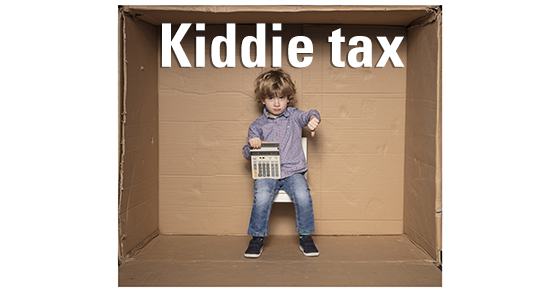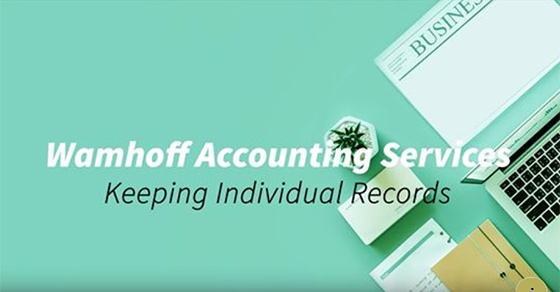The IRS recently notified us that they are sending out notices. Why are you receiving these notices? There are a few possible answers, which Sandy Furuya discusses in her latest video.
Categories
- Employer Knowledge Base (17)
- Individual Taxes (331)
- News (30)
- Small Business Taxes (298)
Archives
- May 2024 (6)
- April 2024 (9)
- March 2024 (8)
- February 2024 (8)
- January 2024 (11)
- December 2023 (7)
- November 2023 (9)
- October 2023 (9)
- September 2023 (8)
- August 2023 (9)
- July 2023 (7)
- June 2023 (8)
- May 2023 (10)
- April 2023 (8)
- March 2023 (9)
- February 2023 (8)
- January 2023 (9)
- December 2022 (8)
- November 2022 (10)
- October 2022 (8)
- September 2022 (8)
- August 2022 (8)
- July 2022 (8)
- June 2022 (6)
- May 2022 (9)
- April 2022 (7)
- March 2022 (9)
- February 2022 (7)
- January 2022 (9)
- December 2021 (8)
- November 2021 (9)
- October 2021 (7)
- September 2021 (7)
- August 2021 (9)
- July 2021 (8)
- June 2021 (10)
- May 2021 (9)
- April 2021 (8)
- March 2021 (12)
- February 2021 (8)
- January 2021 (8)
- December 2020 (10)
- November 2020 (9)
- October 2020 (8)
- September 2020 (9)
- August 2020 (8)
- July 2020 (8)
- June 2020 (9)
- May 2020 (9)
- April 2020 (11)
- March 2020 (15)
- February 2020 (10)
- January 2020 (10)
- December 2019 (11)
- November 2019 (7)
- October 2019 (9)
- September 2019 (9)
- August 2019 (7)
- July 2019 (10)
- June 2019 (3)
- May 2019 (7)
- April 2019 (10)
- March 2019 (6)
- February 2019 (8)
- January 2019 (7)
- December 2018 (6)
- November 2018 (6)
- October 2018 (12)
- September 2018 (4)
- August 2018 (7)
- July 2018 (10)
- June 2018 (4)
- May 2018 (12)
- April 2018 (6)
- March 2018 (10)
- February 2018 (10)
- January 2018 (9)
- December 2017 (3)
- July 2016 (2)
- June 2016 (1)
- May 2016 (1)
- April 2016 (1)
- February 2016 (1)
- January 2016 (1)
- December 2015 (3)
- October 2015 (1)
- July 2015 (7)
- June 2015 (1)
Archive for Individual Taxes – Page 42
In July 2018 the IRS announced that certain veterans who received disability severance payments after January 17, 1991 and included that payment as income should file an amended return (Form 1040X) to claim the credit or refund.
This is due to the Combat-Injured Veterans Tax Fairness Act of 2016.
Most veterans received a one-time lump sum payment when they separated from their military service. The veteran should be receiving a letter from the Department of Defense with information on how to claims the credits or refunds.
Typically, there is a statute of limitation on tax refunds. However, this payment has an alternative time frame. Veterans have one year from of date of the letter from DOD. Veterans can claim refunds all the way back to 1991.
The amount to claim will be based on the following standard amounts:
- $1,750 for tax years 1991-2005
- $2,400 for tax years 2006-2010
- $3,200 for tax years 2011-2016
If you are eligible for this claim please contact our office and our tax professionals can assist with the forms.
Years ago, Congress enacted the “kiddie tax” rules to prevent parents and grandparents in high tax brackets from shifting income (especially from investments) to children in lower tax brackets. And while the tax caused some families pain in the past, it has gotten worse today. That’s because the Tax Cuts and Jobs Act (TCJA) made changes to the kiddie tax by revising the tax rate structure.
History of the tax
The kiddie tax used to apply only to children under age 14 — which provided families with plenty of opportunity to enjoy significant tax savings from income shifting. In 2006, the tax was expanded to children under age 18. And since 2008, the kiddie tax has generally applied to children under age 19 and to full-time students under age 24 (unless the students provide more than half of their own support from earned income).
What about the kiddie tax rate? Before the TCJA, for children subject to the kiddie tax, any unearned income beyond a certain amount was taxed at their parents’ marginal rate (assuming it was higher), rather than their own rate, which was likely lower.
Rate is increased
The TCJA doesn’t further expand who’s subject to the kiddie tax. But it has effectively increased the kiddie tax rate in many cases.
For 2018–2025, a child’s unearned income beyond the threshold ($2,200 for 2019) will be taxed according to the tax brackets used for trusts and estates. For ordinary income (such as interest and short-term capital gains), trusts and estates are taxed at the highest marginal rate of 37% once 2019 taxable income exceeds $12,750. In contrast, for a married couple filing jointly, the highest rate doesn’t kick in until their 2019 taxable income tops $612,350.
Similarly, the 15% long-term capital gains rate begins to take effect at $78,750 for joint filers in 2019 but at only $2,650 for trusts and estates. And the 20% rate kicks in at $488,850 and $12,950, respectively.
That means that, in many cases, children’s unearned income will be taxed at higher rates than their parents’ income. As a result, income shifting to children subject to the kiddie tax won’t save tax, but it could actually increase a family’s overall tax liability.
Note: For purposes of the kiddie tax, the term “unearned income” refers to income other than wages, salaries and similar amounts. Examples of unearned income include capital gains, dividends and interest. Earned income from a job or self-employment isn’t subject to kiddie tax.
Gold Star families hurt
One unfortunate consequence of the TCJA kiddie tax change is that some children in Gold Star military families, whose parents were killed in the line of duty, are being assessed the kiddie tax on certain survivor benefits from the Defense Department. In some cases, this has more than tripled their tax bills because the law treats their benefits as unearned income. The U.S. Senate has passed a bill that would treat survivor benefits as earned income but a companion bill in the U.S. House of Representatives is currently stalled.
Plan ahead
To avoid inadvertently increasing your family’s taxes, be sure to consider the kiddie tax before transferring income-producing or highly appreciated assets to a child or grandchild who’s a minor or college student. If you’d like to shift income and you have adult children or grandchildren no longer subject to the kiddie tax but in a lower tax bracket, consider transferring assets to them. If your child or grandchild has significant unearned income, contact us to identify possible strategies that will help reduce the kiddie tax for 2019 and later years.
Sandy Furuya, star and president of Wamhoff Accounting Services, tells you everything you need to know about the marriage penalty. Does is it still exist? How should you file? Wamhoff is here to answer your tax questions and concerns.
Wamhoff Accounting helps tax payers like yourself, tax plan for the future! What records should you keep? What’s the best way to track your records? Find out more about these topics in the video below, and let us know your tax questions by contacting us.
You may have heard of the “nanny tax.” But even if you don’t employ a nanny, it may apply to you. Hiring a housekeeper, gardener or other household employee (who isn’t an independent contractor) may make you liable for federal income and other taxes. You may also have state tax obligations.
If you employ a household worker, you aren’t required to withhold federal income taxes from pay. But you may choose to withhold if the worker requests it. In that case, ask the worker to fill out a Form W-4. However, you may be required to withhold Social Security and Medicare (FICA) taxes and to pay federal unemployment (FUTA) tax.
FICA and FUTA tax
In 2019, you must withhold and pay FICA taxes if your household worker earns cash wages of $2,100 or more (excluding the value of food and lodging). If you reach the threshold, all the wages (not just the excess) are subject to FICA.
However, if a nanny is under age 18 and child care isn’t his or her principal occupation, you don’t have to withhold FICA taxes. So, if you have a part-time babysitter who is a student, there’s no FICA tax liability.
Both an employer and a household worker may have FICA tax obligations. As an employer, you’re responsible for withholding your worker’s FICA share. In addition, you must pay a matching amount. FICA tax is divided between Social Security and Medicare. The Social Security tax rate is 6.2% for the employer and 6.2% for the worker (12.4% total). Medicare tax is 1.45% each for both the employer and the worker (2.9% total).
If you want, you can pay your worker’s share of Social Security and Medicare taxes. If you do, your payments aren’t counted as additional cash wages for Social Security and Medicare purposes. However, your payments are treated as additional income to the worker for federal tax purposes, so you must include them as wages on the W-2 form that you must provide.
You also must pay FUTA tax if you pay $1,000 or more in cash wages (excluding food and lodging) to your worker in any calendar quarter. FUTA tax applies to the first $7,000 of wages paid and is only paid by the employer.
Reporting and paying
You pay household worker obligations by increasing your quarterly estimated tax payments or increasing withholding from wages, rather than making an annual lump-sum payment.
As a household worker employer, you don’t have to file employment tax returns, even if you’re required to withhold or pay tax (unless you own your own business). Instead, employment taxes are reported on your tax return on Schedule H.
When you report the taxes on your return, you include your employer identification number (not the same as your Social Security number). You must file Form SS-4 to get one.
However, if you own a business as a sole proprietor, you include the taxes for a household worker on the FUTA and FICA forms (940 and 941) that you file for your business. And you use your sole proprietorship EIN to report the taxes.
Keep careful records
Keep related tax records for at least four years from the later of the due date of the return or the date the tax was paid. Records should include the worker’s name, address, Social Security number, employment dates, dates and amount of wages paid and taxes withheld, and copies of forms filed.
Contact us for assistance or questions about how to comply with these employment tax requirements.
Sign up for our Newsletter!
"*" indicates required fields
News & Articles
Client Portal
Contact Us
© Wamhoff Accounting Services | All Rights Reserved | Privacy Policy | Terms of Use | 636-573-1250 | Email Us






